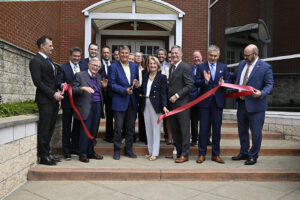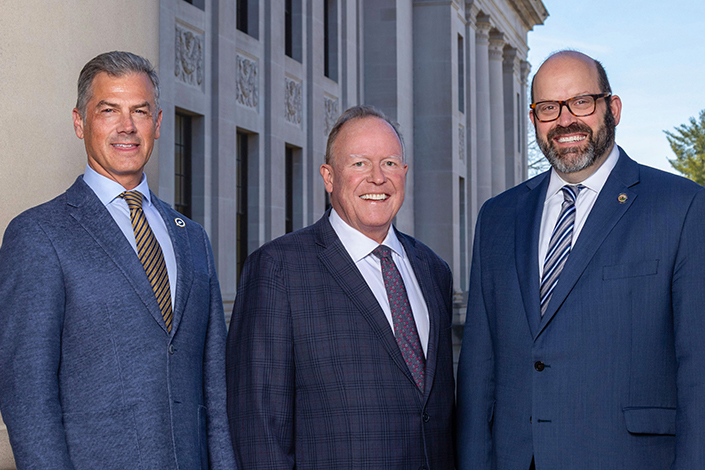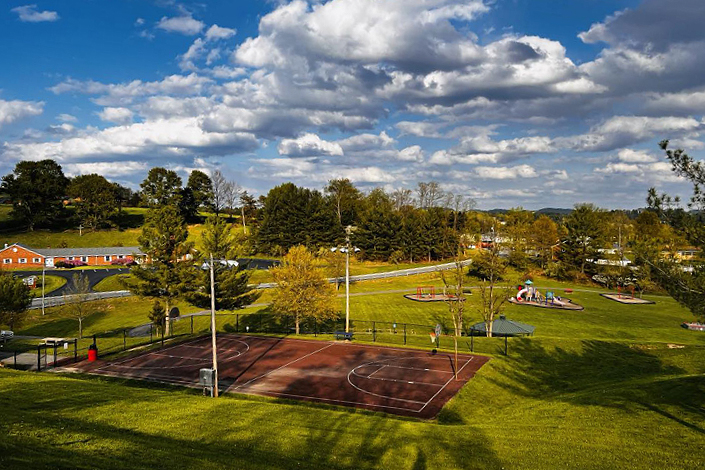Growing the Energy Economy
By Kyle McColgan

Few could have predicted that a war thousands of miles away would set in motion one of the largest federal investments in the Appalachian region’s history. When Russia invaded Ukraine in 2022, the global energy landscape was thrown into turmoil. Supply chains buckled, fuel prices soared and the world saw firsthand the dangers of relying on adversaries for critical energy resources. That crisis sent a clear message: American energy security could no longer be taken for granted.
Senator Joe Manchin saw the writing on the wall and recognized the Bipartisan Infrastructure Law as an opportunity to help develop hydrogen as a new domestic energy source. His advocacy resulted in $8 billion being allocated to create regional clusters of businesses to integrate the production, consumption and usage of hydrogen into their operations. Following the passage of the law, the West Virginia Hydrogen Hub Coalition was formed to direct a portion of that money to the state. This concerted effort culminated in the Department of Energy’s (DOE) October 2023 selection of the Appalachian Regional Clean Hydrogen Hub (ARCH2) to receive up to $925 million in federal cost share support, delivering a victory for West Virginia, the Appalachian region and American energy security.
ARCH2’s Journey
Following the October 2023 announcement, the ARCH2 team—led by Battelle, GTI Energy, TRC Companies and West Virginia-based Allegheny Science and Technology—entered into negotiations with the DOE to determine the details, budget, scope and a clear path forward for the proposed hub. A major milestone was achieved on July 31, 2024, when a cooperative agreement between ARCH2 and the DOE was finalized and ARCH2 was officially awarded funding to begin preliminary planning, site evaluations and stakeholder engagement as well as environmental, financial and technological feasibility assessments.
On August 21, 2024, ARCH2 celebrated another major achievement with the ribbon. cutting ceremony for its program office, located at the WVU Innovation Corporation in Morgantown, WV. The event was a testament to the project’s broad support, with notable attendees such as Battelle CEO Lou Von Thaer, West Virginia University President Gordon Gee and U.S. Senators Manchin and Shelley Moore Capito. Their presence underscored the project’s economic and energy significance for the state.
Community Engagement
ARCH2 is committed to transparency and public engagement, ensuring all stakeholders—including residents, labor organizations and environmental groups—have a voice in the development, construction and operational processes.
Throughout fall and winter, ARCH2 hub-level meetings and engagement have taken place with communities and stakeholders across the tri-state region. The hub’s community benefits and engagement teams maintain ongoing dialogues with various groups, including trade unions, business leaders and environmental advocates. In November 2024, the first in-person community open house event was held at West Virginia State University, which provided local residents with the opportunity to meet representatives of ARCH2 and the DOE. Additional open house events were held in Ohio and Pennsylvania shortly after the new year, with more to be scheduled throughout 2025 to keep communities informed and involved.

At the hub level, planning for ARCH2’s individual projects has proceeded at a robust pace. Led by ARCH2’s 11 project development partners, these innovative projects will produce hydrogen from novel methods and feedstocks, further solidifying
West Virginia’s role as a leader in the hydrogen economy.
Growing West Virginia’s Economy
Over its six-decade history, the Appalachian Regional Commission (ARC) has invested approximately $5.65 billion across a range of infrastructure and economic development projects. While smaller in total, the $925 million federal investment in ARCH2 will be distributed over just a decade, concentrating its economic impact in a much shorter time frame and potentially rivaling ARC’s long-term influence on the region.
Although other regional development projects are larger and more expensive, it’s important to note that $925 million is a huge investment. To put it into perspective, if you spent one dollar every second, it would take you over 29 years to spend $925 million. If divided among every person in West Virginia, about 1.76 million people, each person would get over $525. If you made $50,000 per year, it would take you 18,500 years to earn $925 million.
What’s Next for ARCH2?
ARCH2 is poised to become a cornerstone of West Virginia’s economic and energy future. In the near term, the hub and its partners will be focused on completing the initial planning and due diligence associated with such a massive infrastructure project. After that, work will begin to secure all required state, local and federal permits, followed by the design and engineering of the facilities for each project, along with developing offtake agreements. Looking ahead, the installation, building and construction phase will likely begin in the early 2030s, assuming all goes according to plan.
ARCH2 is an ambitious project that will solidify West Virginia’s position as an energy production powerhouse. Thanks to the state’s congressional leadership and the cooperation of countless organizations and individuals, the future looks bright.








